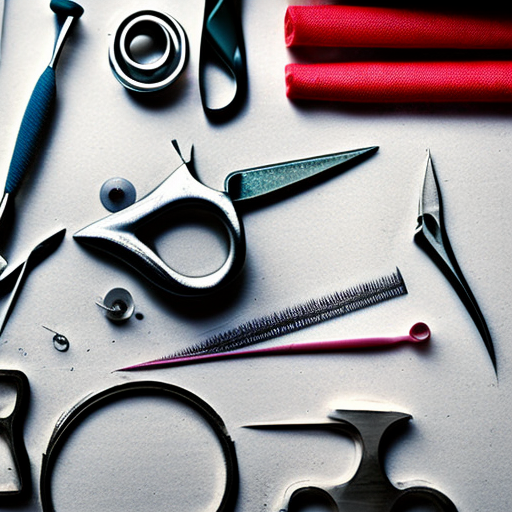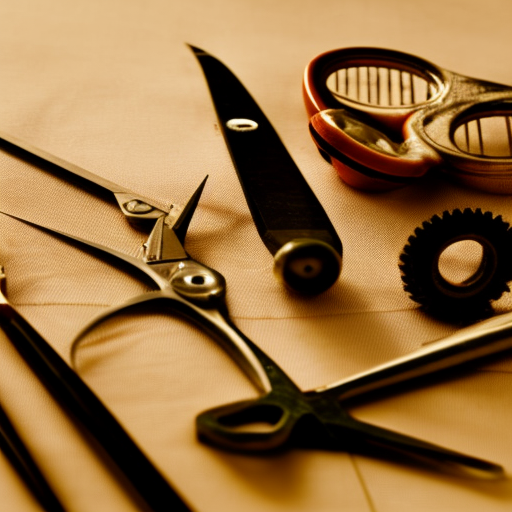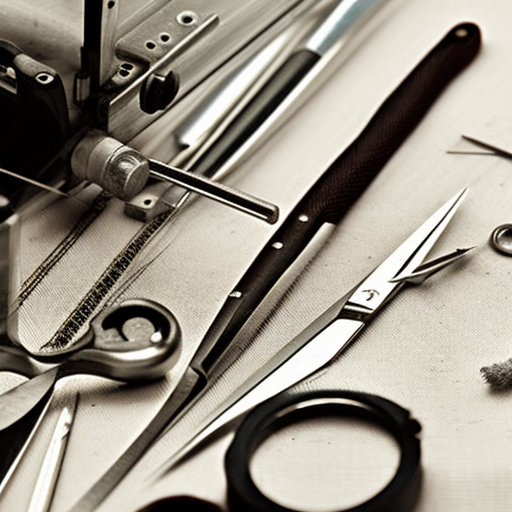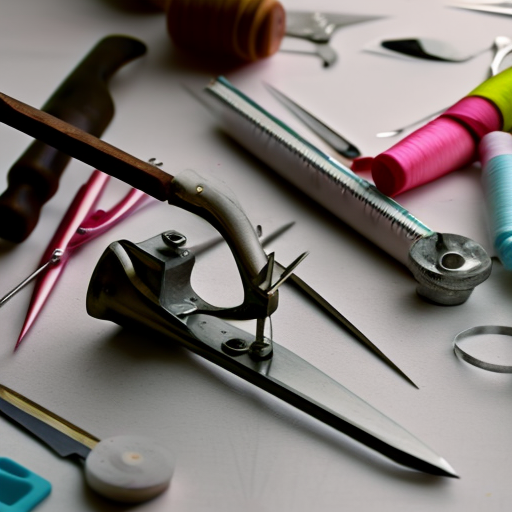As any seasoned seamstress or tailor knows, sewing mistakes happen. Whether it’s a missed stitch, a crooked line, or a wrong measurement, these errors can be frustrating and time-consuming to fix. But fear not, for there is a trusty tool that can easily save the day – the seam ripper.
The Basics of a Seam Ripper
A seam ripper is a small, hand-held tool with a pointed end and a sharp blade. Its handle is typically made of plastic or metal, and the blade is usually made of steel. The size and shape of a seam ripper may vary, but its functions remain the same – to help remove stitches and undo sewing mistakes.
Seam rippers are available in most craft and sewing stores, and they come in different designs and colors. Some may have a retractable blade for safety purposes, while others may have a larger handle for ease of grip. There are also electric seam rippers available for larger and more tedious sewing projects.
How to Use a Seam Ripper
Using a seam ripper is relatively easy, but it does require some caution and patience. Here’s a step-by-step guide on how to properly use a seam ripper:
- Identify the stitches that you need to remove. This can be a single stitch or a row of stitches. Make sure to take note of the direction of the stitches.
- Hold the fabric securely with one hand, and hold the seam ripper with the other hand. Point the sharp end of the seam ripper towards the stitches you want to remove.
- Guide the pointed end of the seam ripper under the thread, catching it with the pointed tip of the blade. Gently push the blade down until it cuts through the thread.
- Slide the blade along the length of the thread, holding the fabric securely with your other hand. Repeat this process until you have removed all the stitches.
- If the stitches were removed successfully, you should see small loops of thread on the surface of the fabric. Use a tweezer or your fingers to pull out these loops and remove any remaining thread fragments.
It is essential to work slowly and carefully, especially when using a seam ripper for delicate fabrics. Rushing through the process may result in damaging the fabric further.
Other Uses of a Seam Ripper
Aside from removing stitches, a seam ripper can also be used for other sewing tasks:
- Opening buttonholes – Seam rippers can easily cut through threads in buttonholes, making it easier to open them without damaging the fabric.
- Cutting threads – If you need to trim excess threads after sewing, a seam ripper can do the job without leaving any marks on the fabric.
- Picking out knots - Sometimes threads may get knotted at the back of a garment. A seam ripper can help you gently untangle the knot without causing any tears.
- Creating perforations – You can use a seam ripper to create small perforations on fabric to mark areas for sewing, folding, or cutting.
Maintenance and Safety Tips
Proper maintenance and usage of a seam ripper will ensure that it lasts for a long time. Here are some tips to keep in mind:
- Clean your seam ripper after use. Use a small brush to remove any thread fibers or lint that may have accumulated on the blade. Be careful not to injure yourself while cleaning.
- Store your seam ripper in a safe place, away from children’s reach.
- Be cautious when using a seam ripper. Its sharp blade can easily cause injuries if not used carefully.
- Replace your seam ripper when necessary. If you notice that the blade has become dull, it’s time to invest in a new one. A dull seam ripper can damage the fabric and make the process more difficult.
In Conclusion
The seam ripper may seem like a simple and insignificant tool, but it is a lifesaver for any sewing enthusiast. It provides a quick and easy solution for fixing sewing errors and making adjustments to garments. By following proper usage and maintenance, your seam ripper can become your go-to tool for all your sewing projects.
So next time you are at your sewing station and encounter a frustrating mistake, reach for your trusty seam ripper, and with a few careful strokes, you’ll be back on track to creating flawless and beautiful stitches.






Great tool!
Karen Dagle: Yay for seam rippers!
Yes! Seam rippers are a must-have for any sewer – so useful for getting through tricky parts and making sure seams are just right! Nothing worse than spending time making something and then realizing it’s not quite right – thankfully, seam rippers are there to help!
Absolutely indispensable!
Absolutely agree! Seam rippers are a life saver!